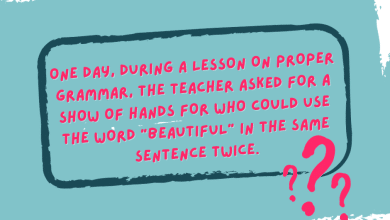
There is a fantastic array of succulents, grasses, and flowers that can survive in low-water conditions. Check out these 15 beautiful drought-tolerant garden plants that you’ll never need to water all summer long.
1. Golden Barrel Cactus

This desert native is a slow-growing round plant that can grow up to four feet tall. Preferring full sun and well-drained soil, it blooms throughout spring and summer, showing off its pretty yellow flowers.
The Golden Barrel Cactus requires little care and attention and is suitable for USDA plant hardiness zones 9 to 11.
2. Hens and Chicks

This alpine plant grows perfectly in a rockery or other dry location, although it is better suited to warmer locations (between 65 and 75 F).
So-called because each plant produces numerous ‘babies’, Hens and Chicks require full sun yet should rarely be watered.
3. Blue Sage

Growing up to 6 feet tall, with gray-green foliage and bright blue flowers that bloom extensively in late summer, the Blue Sage is as beautiful as it is hardy. It’s also a great plant to attract pollinators to your garden.
This wildflower can be found in rocky prairies, shaded limestone glades, and open woodlands and is an excellent choice for dry and arid regions. Those in zones 4 to 9 should find Blue Sage thrives in full sun or partial shade, and in dry, sandy, or loamy soil.
4. Brachycome

A gorgeous little half-hardy annual, the Brachycome is native to Western Australia and so is able to survive well in loamy or even sandy soil, although it does require full sun.
Once established, Brachyscome is surprisingly drought tolerant. In colder weather, it will require protection from the elements.
5. Yarrow
Bright yellow Yarrows, boasting beautiful heads of tiny, tightly-packed flowers and fern-like foliage, are so versatile and low maintenance. They may hold medicinal properties too, as Native Americans used yarrow plants to treat sunburn, and for stress and anxiety.
Plant Yarrows in rock gardens, borders, and any other dry, hot region of the garden – they will not tolerate wet soil.
Choose your plants carefully as some species (such as the Achillea millefolium) are invasive.
6. Evening Primrose
The yellow Evening Primrose is a fantastic addition to any garden, providing you with plenty of bang for your buck!
This adorable native wildflower helps attract more nightlife to your garden and boasts a wide array of medicinal uses from balancing hormones to easing skin conditions.
All parts of the evening primrose plant can be eaten – from the leaves to the roots!
7. Thyme

There are so many reasons to grow Thyme either indoors or out. This small, evergreen shrub with light purple flowers and a pleasant taste lends a fantastic flavor to all manner of dishes – from sauces and soups to desserts and drinks.
In the garden, thyme adds a wonderful aroma to your outdoor living space, while attracting pollinators and repelling garden pests!
Culinary Thyme is a hardy, drought-tolerant perennial that is evergreen in most gardening zones.
8. Cardinal Climber
An annual vine with emerald green foliage and small crimson flowers that attract hummingbirds, the Cardinal Climber looks great on arbors, arches, and posts. Climbing to 15 feet tall, it has a very long bloom season and grows quickly.
This vine needs good drainage and average soil. It can tolerate the drought of the summer months well, but it produces fuller blooms with regular watering.
9. Echinacea

Echinacea, commonly called Purple Coneflower, is a genus of nine species of herbaceous plants in the family Asteraceae. All are strictly native to eastern and central North America. The plants have large, showy heads of composite flowers, blooming from early to late summer. The genus name is from the Greek echino, meaning “spiny”, due to the spiny central disk.
A bold and beautiful flower, the Echinacea – also known as the purple coneflower – is a native plant that attracts goldfinches, hummingbirds, bees, and butterflies.
10. Gaillardia

Also known as blanket flowers, Gaillardia is low maintenance perennials that flower in their first year and add color to the landscape for an exceptionally long season – from early summer into fall.
Gaillardia is a tough prairie plant with showy flowers in bright shades of red and yellow. It requires full sun and prefers loose, sandy soil with a neutral or slightly alkaline pH. Once established, this plant is quite a drought-tolerant.
11. Lavender

The beautifully fragrant lavender plant is a must for any garden! Not only does it repel mosquitoes, flies, fleas, and moths, but it attracts beneficial pollinators.
You can harvest your homegrown lavender plant to make all manner of medicinal and beauty products which relieve stress and anxiety, promote glowing skin, and improve sleep quality. The benefits of lavender don’t end there though – it can also be used in desserts and drinks, around the home and so much more.
Lavender is a hardy plant that doesn’t require a whole lot of watering or general care once established.
12. Butterfly Bush

The Butterfly Bush, or buddleia, is a fast-growing, deciduous shrub whose arching shoots can reach up to 12 feet tall. From summer to autumn, it produces fruit-smelling flowers which are extremely attractive to pollinators.
Native to China and Japan, the butterfly bush grows well in zones 5 through 10, depending on the variety chosen. (Note that several species are considered invasive, so choose your plant wisely).
Once established, the Butterfly Bush is drought tolerant and enjoys a sunny position.
13. Globe Thistle

The Globe Thistle is a weird and wonderful plant that is sure to be a garden focal point.
These tall, purple-blue perennials have spherical flower heads and spiny, prickly leaves which attract butterflies and bees while commanding the attention of anyone who passes them.
They grow well in hot, dry climates, full sunlight, and well-drained soil. Once established, they are drought tolerant and winter hardy to zone 3.
14. Oriental Poppies

With brightly colored, silky flowers that grow up to 6 inches wide, the Oriental Poppy stands atop a 4-foot tall stem.
Oriental Poppies prefer cool climates and are hardy in USDA zones 3 to 8. They require a minimum of 8 hours of full sun each day in order to bloom. While they are drought tolerant, a weekly watering does enhance their flowering – but it’s not essential to their survival.
15. Firecracker Vine

The unusual annual Firecracker Vine produces vivid red blossoms which fade to orange and yellow.
A native of Mexico and Central and South America, the vines bloom from summer to fall but can bloom year-round in warmer zones.
Firecracker vine plants require full or partial sun and do well in almost any soil type. They are deer resistant and both heat and drought-tolerant once established.







